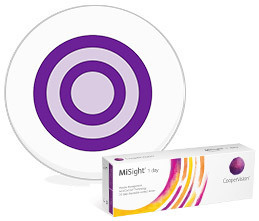Myopia on the Rise
Myopia, or nearsightedness, once considered a refractive problem is now considered a public health concern. In 2010, approximately 28% of the world’s population was reported to be myopic. By 2050, it is projected that 50% of the global population (approximately 5 BILLION people) will be myopic!
So, what is the concern? With myopia there is inherent risk of associated ocular comorbidities that may permanently and negatively affect vision and eye health, including myopic macular degeneration, glaucoma, retinal holes and tears, and retinal detachment. If your child’s vision is increasing at an alarming rate every year, the risk for these sight-threatening conditions is exponentially higher.
There are two main factors that contribute to the increasing prevalence of myopia. The first is the genetic (family history) component of myopia. If a child has both parents who are myopic, there is a 50% chance the child will develop myopia. This risk is lowered to 33% if the child has only one myopic parent. However, even if both parents are not myopic the risk is still 25%! This indicates that myopia is also influenced based on the child’s environment and lifestyle.
Evidence from randomized clinical trials have demonstrated increased time spent outdoors can delay the onset of myopia; it may also have a protective effect in slowing progression. Alternatively, greater duration of “screen time” and closer working distances can be detrimental by increasing myopia risk and facilitating progression. We advise parents to limit their child(ren)’s screen time and encourage more time spent outdoors. More research is necessary to understand the complexity of the genetic and environmental factors on myopia onset and progression.
A child’s age is the single best predictor for myopia progression. Typically, children with a younger onset is associated with faster progression and higher levels of myopia. While there is no cure for myopia, a customized myopia management plan can substantially help slow the progression of myopia in children.
 Studies show early intervention has the biggest impact on reducing myopia progression. Currently, there are several widely acceptable and effective treatment options available, including contact lens options namely orthokeratology and multifocal contact lenses, and/or atropine eye drops. Myopia research is ongoing, so it is important to keep up to date on new advances and changes. We are proud to be one of the first eye care providers in Hawaii to introduce the latest technology for myopia control – MiSight 1 Day, the first FDA-approved daily disposable soft contact lenses for myopia control!
Studies show early intervention has the biggest impact on reducing myopia progression. Currently, there are several widely acceptable and effective treatment options available, including contact lens options namely orthokeratology and multifocal contact lenses, and/or atropine eye drops. Myopia research is ongoing, so it is important to keep up to date on new advances and changes. We are proud to be one of the first eye care providers in Hawaii to introduce the latest technology for myopia control – MiSight 1 Day, the first FDA-approved daily disposable soft contact lenses for myopia control!
Please contact our office today at 808-737-5811 to learn more!